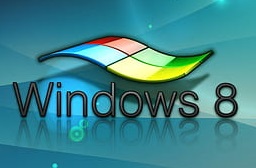When Microsoft released Windows 8 in October 2012, it represented one of the boldest redesigns in the company’s history. Abandoning the familiar desktop-first approach that had defined Windows for decades, Microsoft introduced a radically different user interface built around touch interaction and mobile sensibilities. While commercially Windows 8 failed to match the success of its predecessors, its influence on user interface design has been far more significant and enduring than many realize.
The Metro Revolution: A Design Language Emerges
Windows 8 introduced the world to Microsoft’s “Metro” design language (later renamed to “Microsoft Design Language” for legal reasons). This design philosophy embraced minimalism with flat, colorful tiles, typography-focused interfaces, and the elimination of skeuomorphic elements that had dominated software design. The result was visually striking – a stark departure from the three-dimensional, gradient-rich aesthetics of previous Windows versions.
Metro design embraced several key principles that would later influence the entire industry:
- Content over chrome – reducing interface elements to focus on user content
- Authentic digital design – embracing the digital medium rather than mimicking physical objects
- Typography as design – using text as a primary design element
- Motion as functional – employing animation to convey meaning and relationship
These principles represented not just a visual refresh but a fundamental rethinking of how users should interact with computers in an increasingly mobile and touch-oriented world.
Live Tiles: Information at a Glance
Perhaps Windows 8’s most distinctive feature was the introduction of Live Tiles – dynamic, updating blocks of information that formed the centerpiece of the new Start screen. These interactive elements displayed real-time information without requiring users to open applications, creating an ambient awareness of important updates, messages, and activities.

While controversial at launch, Live Tiles pioneered the concept of “glanceable information” that would later influence numerous platforms. From smartphone widgets to smart home displays, the idea that interfaces should proactively surface relevant information without user intervention has become a standard expectation across the technology industry.
The Controversial Charms Bar and Edge Gestures
Windows 8 introduced several navigation patterns that proved polarizing. The Charms Bar – a hidden menu accessed by swiping from the right edge – consolidated system functions like search, sharing, and settings. Edge gestures and hot corners enabled multitasking and app switching through swipes from screen edges.
Though these specific implementations were largely abandoned in later Windows versions, they represented early explorations of gesture-based navigation that would later become standard on mobile devices. The principle of edge gestures for navigation has since become ubiquitous on iOS and Android platforms.

Cross-Device Continuity and Universal Design
Windows 8 emerged from Microsoft’s ambition to create a unified experience across devices – from phones to tablets to traditional PCs. This vision of consistency across form factors introduced the concept of responsive design scaling and context-aware interfaces to mainstream computing.
While the execution was imperfect, the underlying philosophy – that software should adapt intelligently to different screen sizes and input methods – has become fundamental to modern application design. Today’s progressive web apps and responsive websites owe a significant debt to the cross-device ambitions that Windows 8 pioneered.
The Pendulum Swing and Lasting Influence
Windows 8’s radical departure from convention sparked significant user backlash, leading Microsoft to retreat somewhat in Windows 10 by reintroducing more familiar desktop elements. However, this pendulum swing shouldn’t obscure the lasting impact of Windows 8’s design innovations.
Elements that survived and evolved include:
- The flat, typography-focused aesthetic now standard across the industry
- Live information displays (evolved into Windows 10’s Live Tiles and later Widgets)
- Touch-friendly interfaces with larger targets and simplified navigation
- The Microsoft Store concept for application distribution
- Settings app replacing traditional Control Panel
Perhaps most significantly, Windows 8 accelerated the entire industry’s transition away from skeuomorphic design toward the flat, minimal interfaces that dominate today’s digital landscape.
Windows 8’s Place in UI Design History
Design history often recognizes bold experiments that, while commercially challenging, push boundaries and inspire future evolution. Windows 8 firmly belongs in this category – a commercially difficult but creatively influential release that changed Microsoft and the broader technology industry.
The clean lines, typography focus, and content-first approach pioneered by Windows 8 can be seen today not just in Microsoft products but across competing platforms and websites. While users may have rejected the specific implementation of these ideas in Windows 8, the underlying design principles have been vindicated by their widespread adoption throughout the digital world.
Windows 8 reminds us that innovation often faces resistance, but truly forward-thinking ideas eventually find their way into the mainstream – even if not in their original form. The operating system’s user interface, once criticized as too radical, now looks remarkably prescient in a world dominated by the very design principles it championed.
